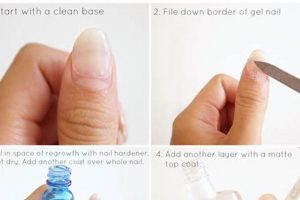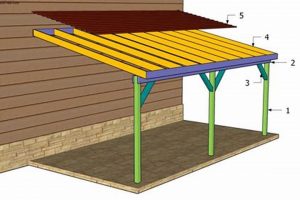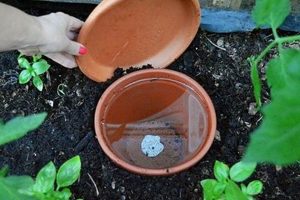The process of creating printed designs on various surfaces using a mesh screen, stencil, and ink, all executed by the individual rather than a professional service, constitutes a form of accessible and creative production. This method allows for the reproduction of images and patterns onto textiles, paper, and other materials with relatively simple tools and techniques. As an example, an individual might create a t-shirt with a custom design using this method in their home workspace.
This self-directed printing practice provides significant benefits, including cost-effectiveness for small-scale projects and complete control over the creative process. Historically, similar stencil-based printing methods have existed for centuries, but the modern iteration offers a unique blend of accessibility and personalization. The capacity to produce customized goods without substantial financial investment or reliance on external services fosters individual expression and entrepreneurial opportunities.
The following sections will detail the essential equipment, the step-by-step process involved in executing this printing technique, and various tips for achieving optimal results. Understanding these fundamental aspects facilitates successful project completion and allows for creative experimentation.
Tips for Successful DIY Screen Printing
The following recommendations offer guidance for improved results when undertaking the screen printing process independently. Adherence to these suggestions can mitigate common errors and enhance the quality of the finished product.
Tip 1: Screen Preparation is Paramount: Ensure the screen is thoroughly cleaned and degreased prior to applying the emulsion. Residual oils or contaminants can prevent proper emulsion adhesion, leading to stencil breakdown during printing.
Tip 2: Emulsion Coating Consistency: Apply the emulsion in a thin, even layer using a scoop coater. Uneven coating results in inconsistent exposure and a compromised stencil.
Tip 3: Exposure Time Accuracy: Precisely calibrate the exposure time based on the specific emulsion type, light source, and stencil design. Overexposure or underexposure drastically affects stencil detail and durability.
Tip 4: Ink Selection Matters: Choose the appropriate ink type based on the substrate being printed. Fabric inks, for example, require heat setting for permanence, while paper inks may not.
Tip 5: Flood the Screen Before Each Pass: Prior to each squeegee pass, flood the screen with ink to ensure the stencil is fully saturated. This prevents incomplete ink transfer and produces sharper prints.
Tip 6: Squeegee Technique Refinement: Maintain a consistent squeegee angle and pressure throughout each pass. Inconsistent pressure results in uneven ink distribution and blurring.
Tip 7: Fabric Tension on Substrate: Ensure the fabric or material being printed on is taut and flat. Loose material can move during the printing process, leading to image distortion.
By implementing these crucial techniques, individuals can significantly improve the quality and longevity of their screen-printed projects. Precision in execution remains a key factor in achieving professional-looking results.
The subsequent section offers guidance on troubleshooting common issues encountered during the printing process and provides strategies for resolving these problems effectively.
1. Stencil Creation
Stencil creation is a foundational aspect of self-directed screen printing. The quality and accuracy of the stencil directly influence the fidelity and durability of the printed image. Understanding the nuances of stencil creation is therefore essential for successful execution of the printing process.
- Emulsion Selection and Application
Emulsion choice dictates the resolution and resistance of the stencil. Selecting an emulsion appropriate for the intended ink type and exposure method is critical. Proper application, including uniform coating thickness, ensures even exposure and optimal stencil integrity. For instance, a thicker emulsion layer may be necessary for printing with abrasive inks onto textiles, whereas a thinner coating suffices for paper printing. Inadequate emulsion application leads to image distortion or stencil breakdown during the printing process.
- Exposure Time Calibration
Precise calibration of exposure time is paramount for achieving a stencil that accurately reflects the desired design. Overexposure results in a hardened stencil that is difficult to wash out, while underexposure leads to a fragile stencil prone to damage. Exposure time is dependent on the emulsion type, light source intensity, and stencil design complexity. A test strip, with incremental exposure variations, can be used to determine the optimal exposure duration. Incorrect exposure calibration results in loss of fine details or premature stencil failure.
- Artwork Preparation and Transparency
The quality of the artwork used to create the stencil is a crucial determinant of the final print’s clarity. Artwork should be high-resolution and opaque to ensure accurate light blockage during the exposure process. Transparency films, typically created with laser printers or dedicated film positives, are used to transfer the design to the screen. Low-quality artwork or translucent films result in blurred or incomplete stencil images. Correct artwork preparation allows for precise replication of the intended design on the printed substrate.
- Washout Technique and Timing
The washout process, involving the removal of unexposed emulsion with water, demands careful execution. Excessive water pressure can damage the exposed stencil, while insufficient rinsing leaves residual emulsion that compromises image quality. Timing is critical; waiting too long after exposure makes the emulsion more difficult to remove. A gentle spray nozzle and thorough inspection are necessary for ensuring complete removal of unexposed emulsion without damaging the stencil’s integrity. Improper washout technique compromises the stencil’s durability and the print quality.
These elements of stencil creation, when meticulously addressed, significantly contribute to the quality and longevity of screen printed designs. Neglecting any one of these facets compromises the final product and underscores the importance of a comprehensive understanding of stencil creation in screen printing.
2. Screen Mesh Selection
Screen mesh selection represents a critical parameter within the domain of self-directed screen printing. The mesh count, measured in threads per inch (TPI), dictates the fineness of the screen and, consequently, the amount of ink deposited onto the substrate. In the context of independent printing projects, the correct mesh selection directly im
pacts print resolution, detail retention, and overall image quality. Using a high mesh count, for example, is necessary for printing intricate designs with fine lines, while a lower mesh count is more suitable for bold graphics or printing onto thicker textiles where greater ink deposition is required. Failure to appropriately select mesh count leads to prints that are either blurry and lacking detail (if the mesh count is too low for a detailed design) or exhibit poor ink coverage and durability (if the mesh count is too high for the ink type and substrate).
Practical application of mesh selection principles is evident in various scenarios. Consider printing a photograph onto a t-shirt. This application requires a high mesh count (200-300 TPI) to reproduce the fine details and gradients present in the image. Conversely, printing a simple logo onto a canvas bag benefits from a lower mesh count (86-110 TPI), which allows for greater ink coverage and opacity. Moreover, the ink type influences mesh selection; thicker inks like those used in textile printing typically necessitate lower mesh counts to ensure proper flow through the screen. The availability of a range of mesh counts and the ability to select the appropriate screen directly contributes to the flexibility and creative potential of do-it-yourself screen printing.
In summary, appropriate screen mesh selection is paramount for successful self-directed screen printing. Its influence spans image resolution, ink deposit, and substrate compatibility. Understanding the relationship between mesh count, ink type, and intended design enables individuals to achieve professional-quality results without relying on commercial printing services. Challenges related to mesh selection include the initial investment in multiple screens with varying mesh counts and the need for a period of experimentation to determine optimal mesh counts for specific applications. However, the enhanced control and customizability afforded by thoughtful mesh selection firmly establish it as a cornerstone of the self-directed screen printing process.
3. Ink Application Technique
Ink application technique represents a critical variable in the self-directed screen printing process. The manner in which ink is applied to the screen directly influences the quality, consistency, and durability of the final print. Control over this technique is a defining characteristic of DIY approaches, allowing for adjustments based on specific project requirements and artistic intentions.
- Squeegee Angle and Pressure
The angle at which the squeegee is held and the pressure exerted during the printing stroke determine the amount of ink forced through the screen mesh. A steeper angle and greater pressure result in increased ink deposition, which may be desirable for certain applications but can also lead to ink bleeding or smudging. Conversely, a shallower angle and lighter pressure reduce ink deposition, potentially resulting in a thin or faded print. Achieving consistent angle and pressure throughout the stroke is essential for uniform ink coverage. For example, printing onto a textured fabric might require increased pressure to ensure adequate ink penetration into the weave.
- Squeegee Speed and Stroke Consistency
The speed at which the squeegee is moved across the screen, as well as the consistency of the stroke, significantly impacts ink distribution. A faster stroke generally results in less ink deposition, while a slower stroke allows for greater ink transfer. Irregularities in stroke speed can cause uneven ink coverage and inconsistencies in the print. Maintaining a steady and deliberate stroke is crucial for achieving a balanced and uniform print. For instance, when printing a large solid area, a slow and consistent stroke helps prevent pinholes or voids in the ink coverage.
- Ink Viscosity and Flow
The viscosity, or thickness, of the ink and its ability to flow through the screen mesh are critical factors in ink application. Inks that are too viscous may not pass easily through the mesh, resulting in a thin or incomplete print. Inks that are too thin can spread uncontrollably, leading to bleeding and loss of detail. Adjusting ink viscosity, for example by adding a reducer, may be necessary to achieve optimal flow for a particular mesh count and substrate. The correct ink viscosity ensures proper ink transfer and detail retention in the printed image.
- Flood Stroke Technique
The flood stroke, performed before the printing stroke, involves spreading ink across the stencil without applying pressure to force it through the mesh. This ensures that the stencil is fully saturated with ink prior to the printing pass. A proper flood stroke prevents the screen from drying out and ensures consistent ink transfer during the printing stroke. Variations in flood stroke technique can affect ink distribution and potentially impact the final print quality. Inadequate flooding may lead to incomplete or uneven prints, while excessive flooding can cause ink to seep under the stencil.
These interconnected aspects of ink application technique highlight the level of control afforded by DIY screen printing. Mastery of these elements allows for customization and refinement of the printing process to achieve desired results, underscoring the importance of understanding and practicing effective ink application techniques in DIY settings. Careful attention to squeegee control, ink properties, and flooding techniques empowers individuals to produce high-quality screen prints tailored to their specific needs and artistic visions.
4. Substrate Compatibility
Substrate compatibility represents a critical consideration within the realm of do-it-yourself screen printing, dictating the success or failure of a project. The term encompasses the physical and chemical interactions between the printing ink and the material onto which the design is applied. Without careful attention to these interactions, the result can be poor adhesion, image distortion, or outright failure of the ink to properly adhere to the substrate. Therefore, the selection of both substrate and ink must be carefully considered in tandem.
- Surface Characteristics and Ink Adhesion
The surface characteristics of a substrate directly impact the ability of the ink to properly adhere. Porous materials, such as cotton fabrics, allow for better ink penetration and mechanical bonding, leading to durable prints. Non-porous materials, like plastics or metals, require inks formulated with specialized adhesives and surface preparation techniques to ensure adequate adhesion. An example of this is the use of flame treatment on polypropylene plastics to increase surface energy and promote ink bonding. In DIY screen printing, neglecting surface preparation or using an inappropriate ink for a given surface can result in peeling, cracking, or fading of the printed image over time.
- Material Composition and Ink Chemistry
The chemical composition of a substrate must be compatible with the selected ink chemistry. Certain materials may react negatively with specific ink formulations, causing discoloration, degradation, or even complete failure of the printing process. For example, some solvent-based inks can dissolve or damage certain types of plastics. Conversely, water-based inks may not properly adhere to hyd
rophobic materials like nylon without pre-treatment. DIY screen printers must consult ink manufacturers’ guidelines and perform test prints to ensure chemical compatibility between the chosen ink and substrate. This proactive approach mitigates the risk of irreversible damage to the substrate or premature failure of the printed design. - Ink Curing Requirements and Substrate Tolerance
The ink curing process, typically involving heat application, requires that the substrate be able to withstand the necessary temperatures without damage or distortion. Fabrics, for example, can generally withstand the heat required to cure plastisol inks, while delicate materials like certain types of paper or thin plastics may warp or melt under the same conditions. DIY screen printers must carefully research the curing requirements of their chosen ink and ensure that the substrate can tolerate the required temperature and duration. Alternative curing methods, such as air drying or UV curing, may be necessary for temperature-sensitive substrates.
- Color Interaction and Opacity
The inherent color of the substrate can influence the final appearance of the printed image. Dark-colored substrates may require multiple layers of ink or the use of opaque inks to achieve vibrant and accurate color reproduction. Transparent or translucent inks may appear significantly different when printed on different colored backgrounds. DIY screen printers should consider the underlying color of the substrate when selecting ink colors and adjust their printing techniques accordingly to achieve the desired visual outcome. Underbasing with white ink is a common technique used to create a neutral foundation for subsequent color layers, ensuring accurate and vibrant color reproduction on dark substrates.
In summation, achieving successful results in DIY screen printing fundamentally hinges on a thorough understanding and careful consideration of substrate compatibility. Proper material selection, surface preparation, and adherence to ink manufacturers’ guidelines are essential steps in avoiding common pitfalls and ensuring the creation of durable and visually appealing printed products. Knowledge of the factors outlined above empowers independent printers to make informed decisions and successfully execute a wide range of printing projects on diverse materials.
5. Exposure Unit Calibration
Exposure unit calibration is a fundamental determinant of success within the realm of do-it-yourself screen printing. The process directly impacts the quality and durability of the stencil, which in turn dictates the fidelity of the final printed image. Inadequate calibration results in stencils that are either underexposed, leading to washout during development, or overexposed, causing a loss of fine detail and difficulty in removing the unexposed emulsion. Therefore, accurate calibration of the exposure unit is not merely a procedural step, but a foundational element influencing the entire DIY printing process.
Consider a practical scenario: An individual attempting to print a complex graphic with fine lines using an improperly calibrated exposure unit. If the exposure time is too short, the emulsion will not harden sufficiently, and the stencil will disintegrate during the washout phase, rendering the screen unusable. Conversely, if the exposure time is excessive, the fine lines in the design may become blocked with hardened emulsion, resulting in a print that lacks the intended detail. Furthermore, variations in light intensity across the exposure area, caused by uneven bulb output or improper lamp distance, can lead to inconsistent stencil hardness, resulting in uneven ink transfer during the printing process. Calibration, therefore, involves precisely determining the optimal exposure time and ensuring uniform light distribution across the screen.
In conclusion, the importance of exposure unit calibration in DIY screen printing cannot be overstated. It is a critical factor influencing stencil integrity, print quality, and overall project success. Challenges in calibration often stem from variations in equipment, emulsion type, and environmental conditions. However, through methodical testing, precise measurement, and diligent record-keeping, individuals engaged in DIY screen printing can achieve consistent and predictable results, thereby unlocking the full potential of this creative medium. A correctly calibrated exposure unit serves as the bedrock upon which high-quality, self-directed screen printing projects are built.
6. Curing Process Management
Curing process management constitutes a critical phase in self-directed screen printing, directly influencing the durability and longevity of the printed image. Inadequate curing results in prints that are susceptible to cracking, fading, or washing out, thereby negating the effort invested in stencil creation and ink application. The curing process, typically involving the application of heat, facilitates the cross-linking of polymer chains within the ink, creating a durable bond with the substrate. This process is particularly crucial for textile printing, where the printed design must withstand repeated washing and wear. The effectiveness of the curing process is directly correlated with the temperature achieved, the duration of exposure, and the specific ink formulation utilized. Deviation from recommended curing parameters invariably compromises the integrity of the printed image. For instance, under-curing plastisol ink on a t-shirt results in a print that feels tacky and will likely crack after a single wash. Proper curing, therefore, is an indispensable component of successful self-directed screen printing.
Effective curing process management necessitates careful monitoring and control of several variables. These include the temperature of the heat source, the dwell time of the printed item within the curing apparatus, and the uniformity of heat distribution across the printed surface. In DIY environments, this often involves utilizing heat presses, flash dryers, or even conventional ovens, albeit with significant risk of inconsistent temperature control. Infrared thermometers are essential tools for verifying that the printed ink reaches the manufacturer’s recommended curing temperature, typically in the range of 320-330F (160-165C) for plastisol inks. Furthermore, the substrate itself can influence the curing process. Thicker fabrics may require longer curing times to ensure thorough ink penetration and bonding, while heat-sensitive materials necessitate lower temperatures and shorter durations to prevent scorching or melting. Accurate record-keeping of curing parameters for different ink-substrate combinations is crucial for achieving consistent and repeatable results. A practical example involves printing a multi-colored design, where each color layer requires individual curing to prevent bleeding or smudging during subsequent applications. Proper management of these individual curing steps is essential for maintaining the sharpness and clarity of the final image.
In summary, curing process management stands as an indispensable element within the self-directed screen printing workflow. While the act of printing may capture the initial visual impact, the curing stage solidifies the print’s long-term resilience. Challenges in this phase often arise from equipment limitations, inconsistent temperature regulation, and a lack of comprehensive understanding of
ink-substrate interactions. However, through meticulous planning, precise monitoring, and a commitment to following manufacturer guidelines, individuals engaged in DIY screen printing can effectively manage the curing process, producing high-quality, durable prints that withstand the rigors of real-world use. Success in DIY screen printing ultimately hinges on a comprehensive understanding of all facets of the process, from stencil creation to the final curing step.
Frequently Asked Questions Regarding DIY Screen Printing
The following section addresses common inquiries and misconceptions concerning the self-directed screen printing process. It aims to provide clear and concise answers to facilitate a better understanding of the techniques and challenges involved.
Question 1: What is the minimum investment required to begin screen printing independently?
The initial cost varies depending on the scale and sophistication of the setup. A basic setup, suitable for small-scale projects, requires a screen, squeegee, emulsion, exposure unit (or alternative light source), ink, and a substrate. This can range from approximately $100 to $300. More advanced setups, including larger screens, multiple squeegees, and dedicated exposure units, can exceed this initial investment significantly.
Question 2: How durable are prints created through self-directed screen printing compared to commercially produced items?
Durability depends on several factors, including the quality of the ink used, the proper curing process, and the nature of the substrate. When high-quality inks are properly cured and applied to compatible substrates, DIY screen prints can achieve comparable durability to commercially produced items. However, inconsistencies in technique and equipment limitations can affect the longevity of the print.
Question 3: What are the most common challenges encountered by individuals new to DIY screen printing?
Common challenges include achieving proper stencil exposure, preventing ink bleeding, ensuring adequate ink adhesion, and maintaining consistent print quality. These challenges often stem from a lack of experience and a misunderstanding of the various factors influencing the printing process. Practice and careful attention to detail are essential for overcoming these obstacles.
Question 4: Is it possible to achieve professional-quality results with a home-based screen printing setup?
Yes, it is possible to achieve professional-quality results with a home-based setup. However, this requires a dedicated workspace, appropriate equipment, a thorough understanding of the printing process, and a significant investment of time and effort. While commercial printing facilities offer advantages in terms of scale and automation, skilled individuals can produce comparable results with a well-equipped and properly managed DIY setup.
Question 5: What safety precautions should be observed when engaging in DIY screen printing?
Safety precautions include working in a well-ventilated area to avoid exposure to harmful fumes from inks and solvents, wearing appropriate personal protective equipment (e.g., gloves, masks, eye protection), and properly disposing of waste materials. Inks and solvents can pose health risks if mishandled, and proper ventilation is essential for minimizing exposure.
Question 6: How does the choice of mesh count impact the final printed image?
The mesh count, measured in threads per inch, determines the amount of ink deposited onto the substrate. Higher mesh counts are suitable for fine details and halftone images, while lower mesh counts are better for bold graphics and thicker inks. Selecting an appropriate mesh count is crucial for achieving the desired print quality and ensuring adequate ink coverage.
These frequently asked questions highlight the complexities and considerations involved in self-directed screen printing. A successful undertaking requires not only the acquisition of equipment but also a thorough understanding of the underlying principles and best practices.
The subsequent section will address troubleshooting techniques for resolving common issues encountered during the screen printing process.
Conclusion
This article has comprehensively explored various facets of DIY screen printing, from essential equipment and techniques to troubleshooting and safety considerations. It underscores the significance of meticulous preparation, precise execution, and a thorough understanding of the materials and processes involved. The successful application of these principles enables individuals to create custom printed designs independently, fostering both creative expression and practical skills.
The information presented herein provides a foundation for further exploration and experimentation. Continued learning and refinement of technique are essential for achieving professional-quality results. As DIY screen printing gains traction as a means of personalized production, its potential for innovation and individual empowerment continues to expand. The future of independent printing hinges on the dedication to mastering the craft and adapting to emerging technologies and materials.



![Diya Aur Baati Hum: Illuminate Your Home [DIY Guide] The DIY Hub: Creative Crafts, Repairs & Life Hacks Diya Aur Baati Hum: Illuminate Your Home [DIY Guide] | The DIY Hub: Creative Crafts, Repairs & Life Hacks](https://craftingdiycenter.com/wp-content/uploads/2025/07/th-5913-300x200.jpg)



